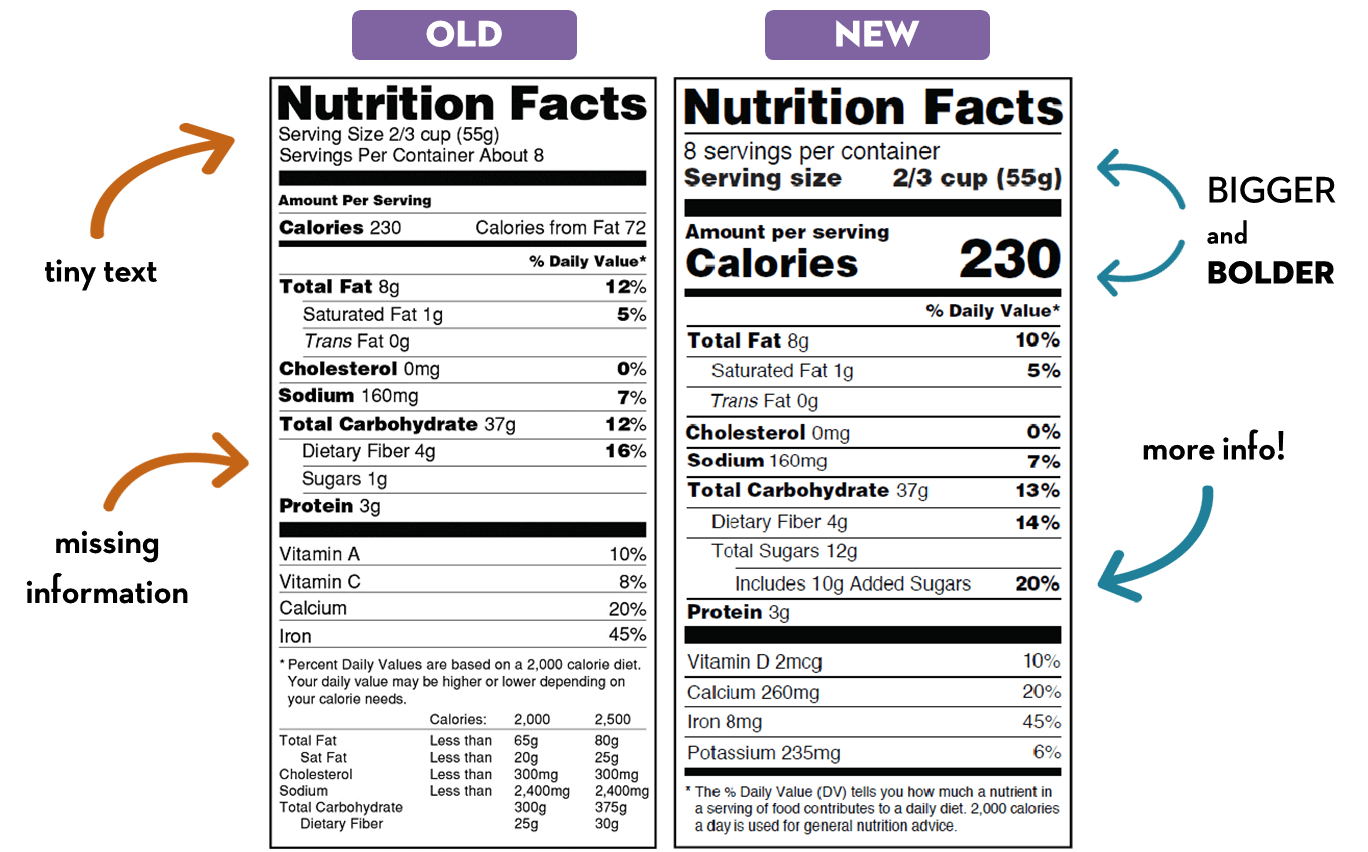Rethink Your Drinks

Staying cool and hydrated in the summer is easy considering there are numerous cold beverages to choose from including soda, sports drinks, teas, carbonated waters, iced coffees, and more. But have you ever stopped to consider how many extra calories and grams of sugar are in each of these and how they affect your diet and health?
One 12-ounce can of soda has 140 calories and 39 grams of sugar and one 16-ounce Starbucks Frappuccino has 420 calories and 66 grams of sugar. Calories and sugar can add up quickly depending on your beverage choice and the quantity you consume. Just imagine what those drinks add up to be after a week or after an entire summer of consumption!
Changes to the Nutrition Facts Label
In May 2016, the U.S. Food & Drug Administration announced the new Nutrition Facts label for packaged foods. The new design is set to help consumers make more informed decisions regarding their food choices. A few of the changes will include increasing the font size and bolding of “Calories,” “Servings per Container,” and “Serving Size.”

Serving sizes must also be based on the amounts of food and beverages people are actually consuming not the suggested serving. An example of this would be a bottle of soda, rather than providing nutrition information on the suggested “serving size” which used to be considered half of a 20-ounce bottle, will now reflect more accurate information. The more accurate information will consider the full 20-ounce soda as one serving and the nutrition information will reflect that.
Updated Dietary Guidelines
Another significant change is including the updated Dietary Guidelines for Americans regarding sugar. The new dietary guidelines state that individuals should limit added sugar consumption to 10 percent of total daily calories. Consumers will now be able to see “Added Sugars,” on all packaged products.
Importance of Reading Labels
Reading labels is always something I recommend my patients do. The nutrition facts label is where you will find the most accurate information to help you determine which food choice to make. If a person were on a 2,000 calorie diet, 10 percent would equal 200 calories. 200 calories of added sugar is equal to 50 grams of sugar or 12 teaspoons of sugar. The new label will help consumers see and understand this information better than ever before.
Along with reading labels, there are other ways to avoid drinking too much sugar and overall calories. The best choice will always be water and fruit-infused water is a fun way to add flavor. If you want something carbonated, choose a diet soda or carbonated water, low-sugar sports drinks, or unsweetened iced tea. Order your favorite coffee drink with fat-free milk and sugar-free flavorings, and skip the whipped cream on top. If coffee drinks aren’t part of your daily routine and you want to indulge a little, simply order the smallest size and enjoy it.
This article was written by Clinical Dietitian, Maji Koetter-Ali, MS, RD, LD, CD and published in Southern Indiana Living.


.jpg?rev=9ddf6790805749b994e44780efdfb13c)

